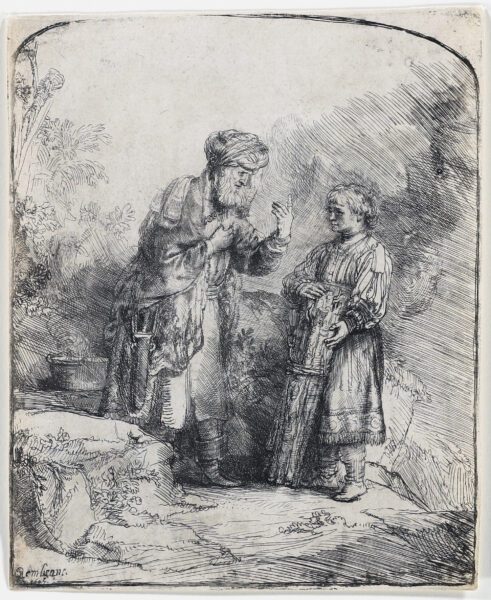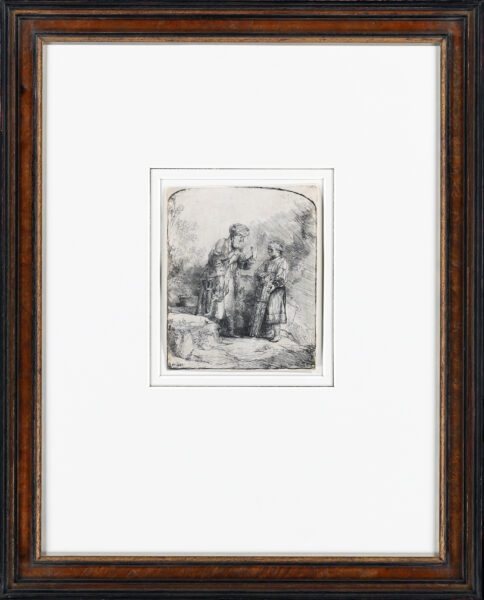“Abraham and Isaac”, 1645
[Gen. 22: 1-8]
etching: 15,7 x 12,8 cm;
signed and dated lower left: Rembrant. | 1645
trimmed to the platemark
"*" indicates required fields
Notes
During his lifetime, Rembrandt’s extraordinary skills as a printmaker were the main source of his international fame. Unlike his oil paintings, prints travelled light and were relatively cheap. For this reason, they soon became very popular with collectors not only within, but also beyond the borders of the Netherlands.
The figure of Abraham, patriarch of Judaism, Christianity and Islam, from the Book of Genesis, appears repeatedly in Rembrandt’s graphic oeuvre, recurring almost every ten years throughout his career as a printmaker (for Abraham’s Sacrifice, see lot 77).
In the present etching, Rembrandt’s genius in depicting intimate yet crucial psychological moments is evident. The scene shows Abraham as he is about to explain his cruel predicament: to sacrifice his favourite son or to disobey God. The setting is a rocky ledge in the mountains of Moriah, a precipitous place, which conveys a sense of dread and impending drama.
Isaac, innocently and trustingly, holds a bundle of firewood. His face betrays no terror. He is yet unaware of his apparent destiny as the victim of the sacrifice. As if to receive his orders, he stands before his father, whose gestures reveal his dilemma: Abraham’s right hand is pressed to his heart, while his left points to the sky, expressing at once his love for his son and his obedience to God.
The background is executed in quite a loose and free manner, while the figures and their garments are intricately described and shaded with an elaborate system of lines and hatching. This lends them a chiseled, sculpted quality reminiscent of Mantegna’s graphic style – certainly an influence on Rembrandt’s printmaking in the later years.
Literature
Bartsch 34; Hind 214;
The New Hollstein, 2013, no. 224: first state (of II)
Plate in existence, private collection The Netherlands
with Nowell-Usticke (1967): C2+
Provenance
- Friedrich Andreas Lieberg (1898 – after 1965), Kassel, Milan, Buenos Aires (Lugt 1681ter);
- Kornfeld, Bern, 21 June 1979, lot 13 (‘Ausgezeichneter, fein ausgewogener Frühdruck mit stark rauh zeichnenden Plattenkanten.’) (CHF 10,000).
- With P. & D. Colnaghi & Co., London (with their stocknumber C 24393 in pencil verso).
- Private collection, Germany
- Christie’s London
- Private Collection, The Netherlands
Condition
a fine impression of the first state (of two) printing very clearly, with good contrasts and a light plate tone in the lower subject





